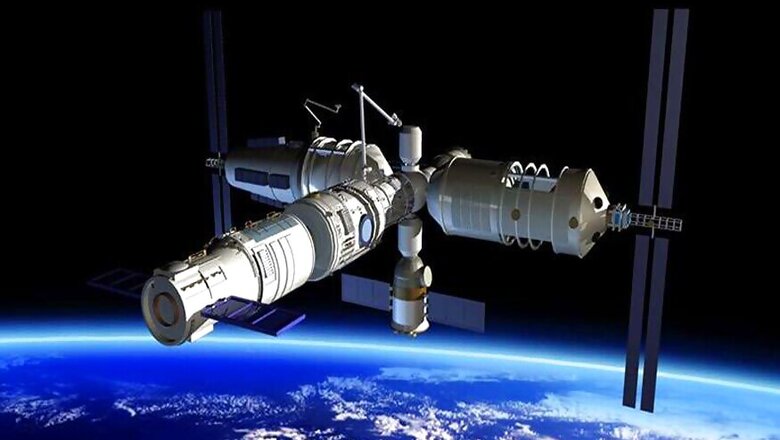
views
Beijing: China's experimental space lab Tiangong-2 will have a "controlled re-entry" into the earth's atmosphere and a small amount of its debris is expected to fall into the South Pacific Ocean on Friday night, the country's space agency said.
The re-entry would take place at a "proper time" tonight, China's Manned Space Engineering Office (CMSEO) said in a press release.
"Preparations for the controlled re-entry into the atmosphere of Tiangong-2 are proceeding steadily as planned. China will timely report the information about the spacecraft after it re-enters the atmosphere to fulfil its international obligations," the CMSEO said.
The space lab was travelling in an elliptical orbit with a perigee (closest point to the Earth) of about 190 km and an apogee (farthest distance from the Earth) of about 370 km by 5:30 pm local time (around 3 pm IST).
The spacecraft was in a stable condition at that time, state-run China Daily quoted the CMSEO as saying.
The first orbital manoeuvre for the re-entry operation took place on Thursday night, it said.
During the re-entry process, most of the spacecraft will burn up, with a small amount of its debris expected to fall in a designated secure area in the South Pacific Ocean, it said.
Tiangong-2, an improved version of Tiangong-1, is China's first space lab launched on September 15, 2016. The space lab has worked in the orbit for over 1,000 days, much longer than its two-year designed life, according to official media reports here.
China plans to launch its permanent space station by 2022.
Comprising an experiment module and a resource module, the space lab has a total length of 10.4 m, the largest diameter of 3.35 m and a take-off weight of 8.6 tonnes.
It has functions of rendezvous and docking with the Shenzhou manned spaceship and the Tianzhou cargo spacecraft, state-run Xinhua news agency reported.
China has carried out a series of scientific and technological space experiments and tested the in-orbit propellant refuelling technology on Tiangong-2.




















Comments
0 comment